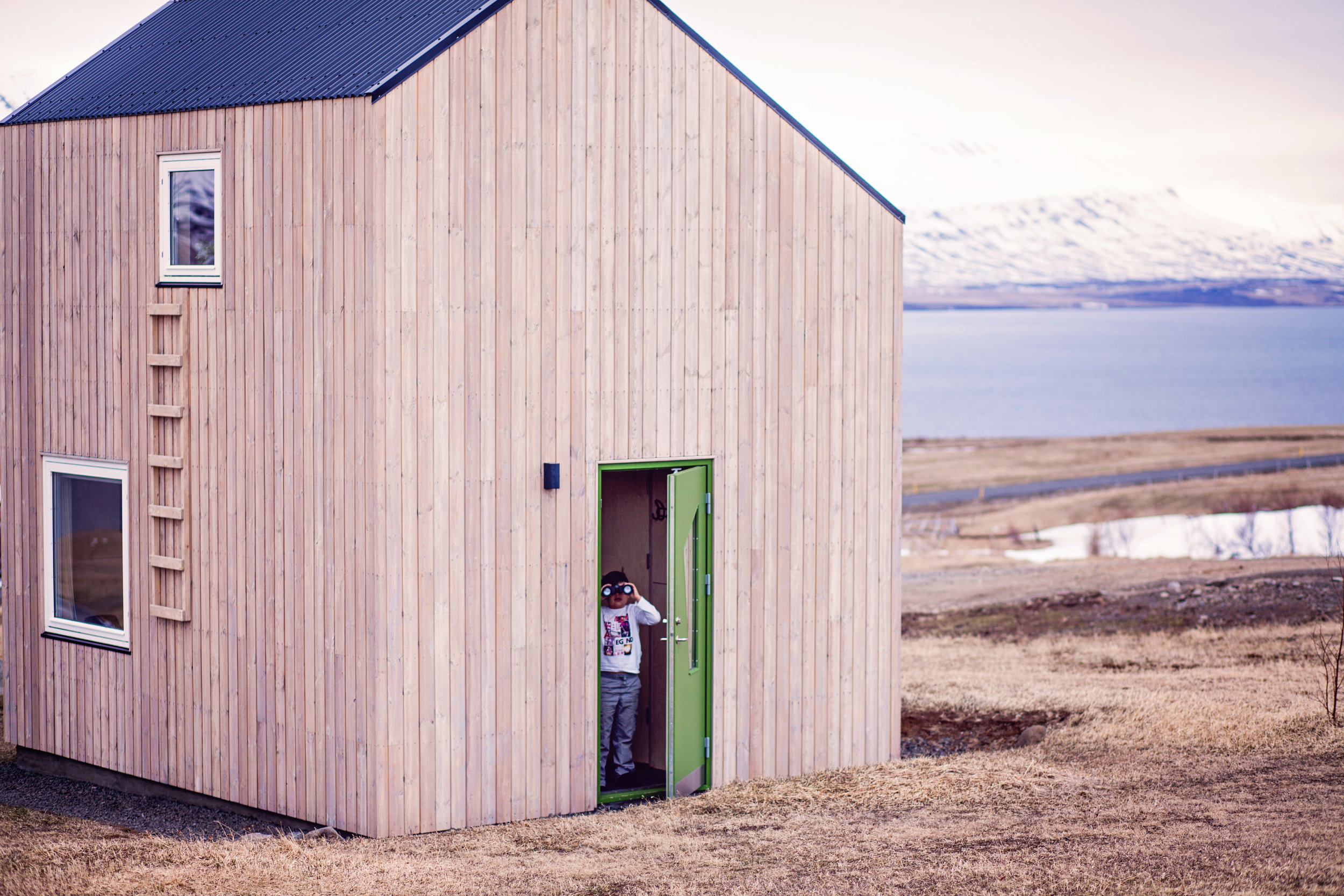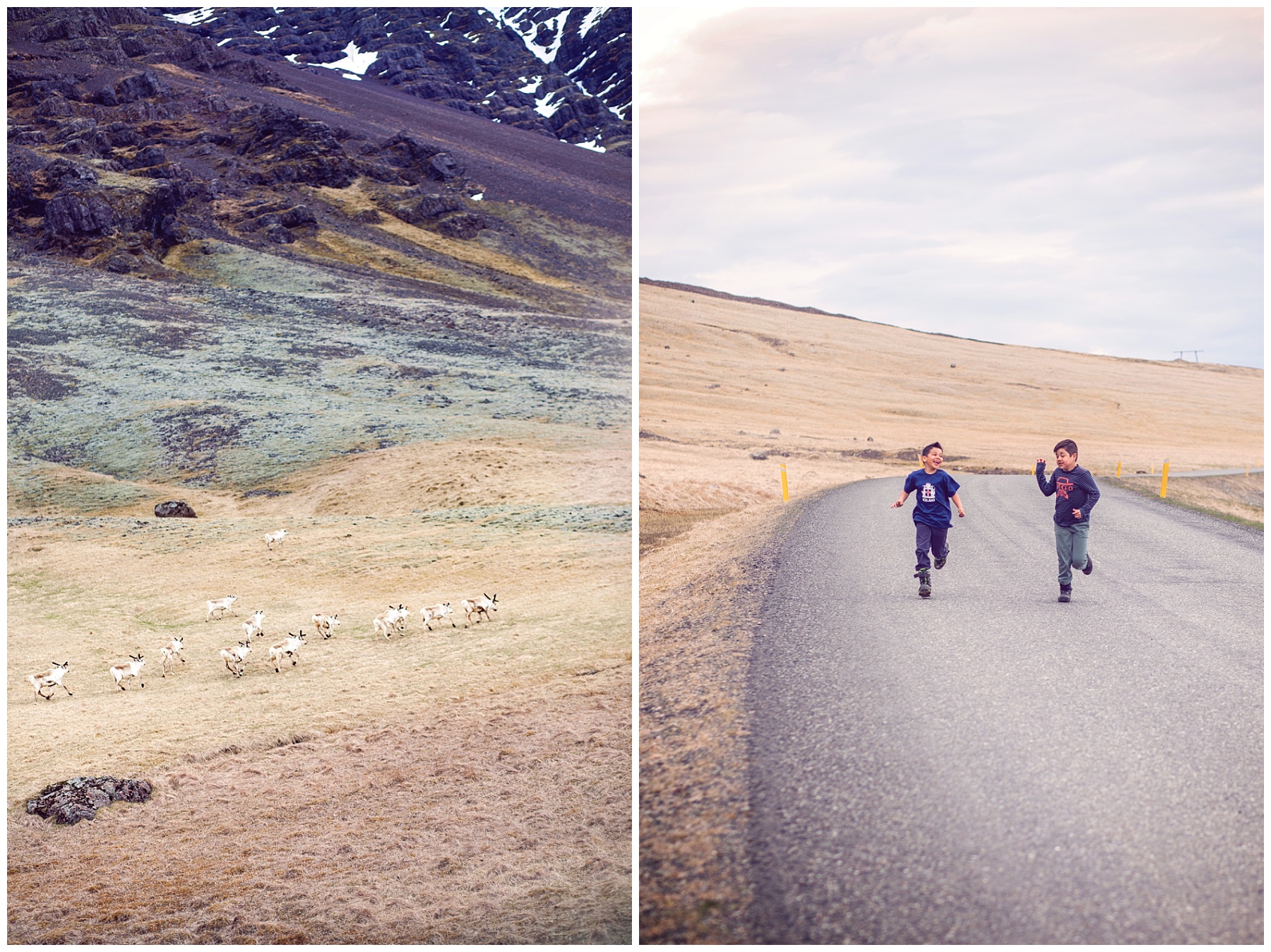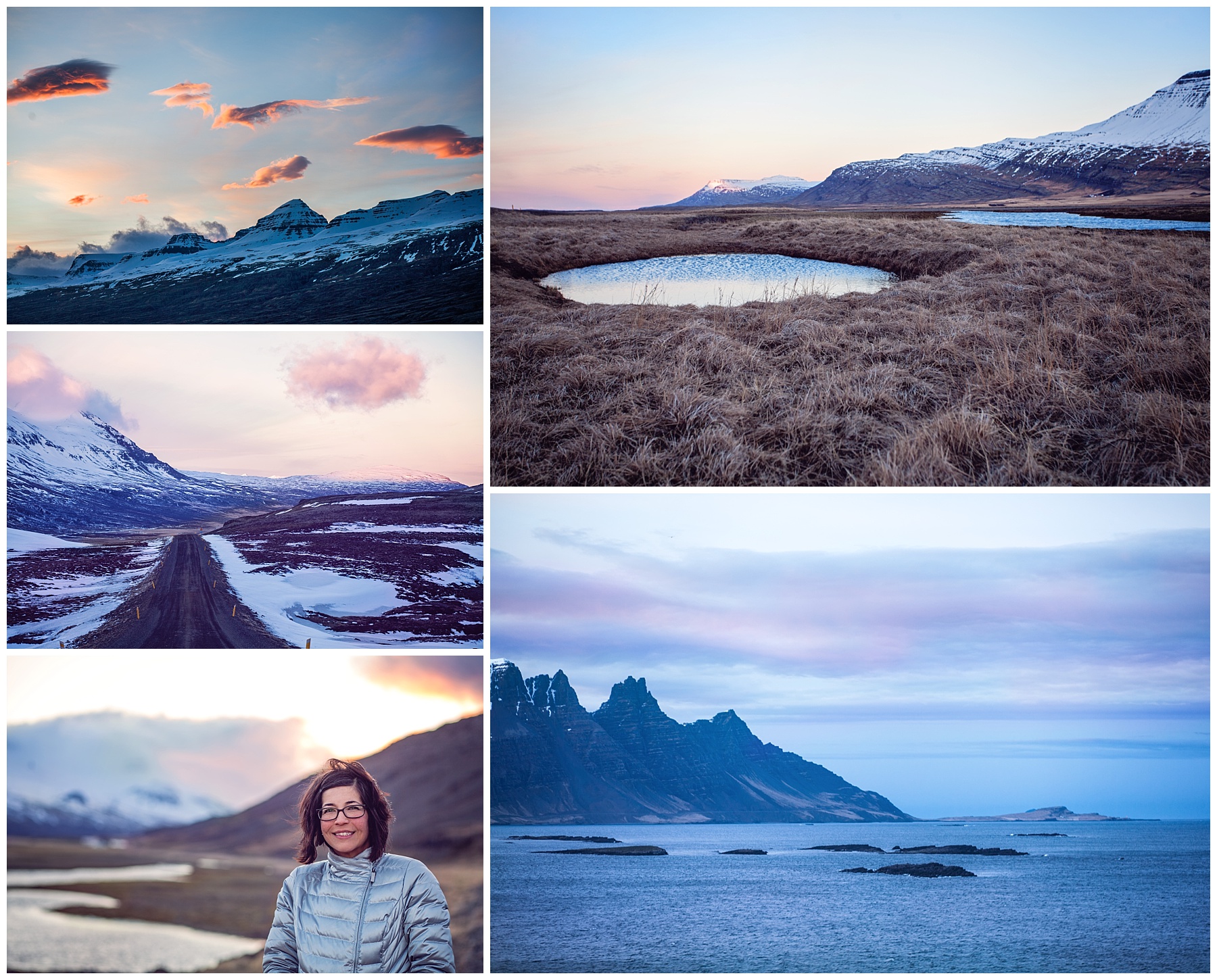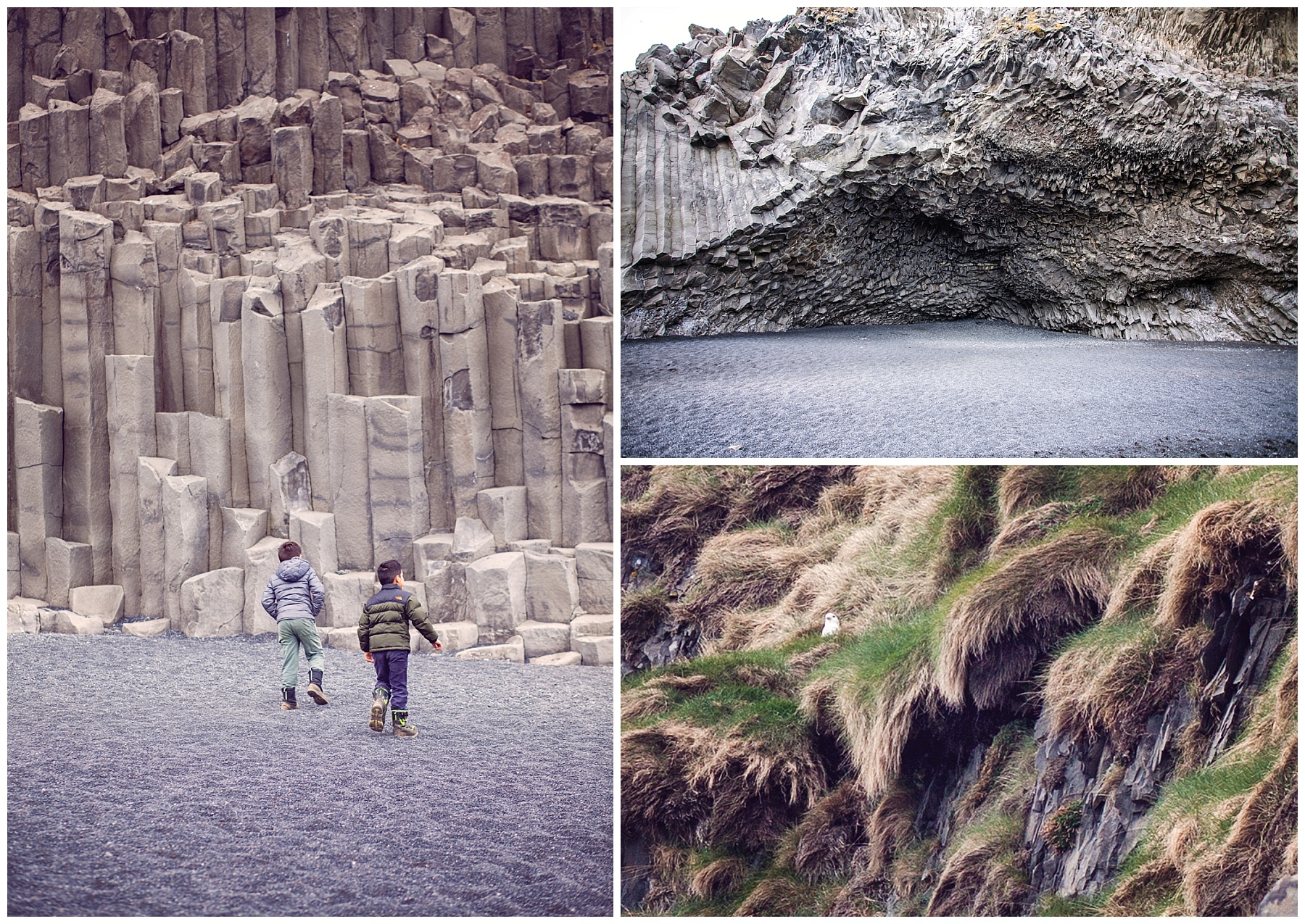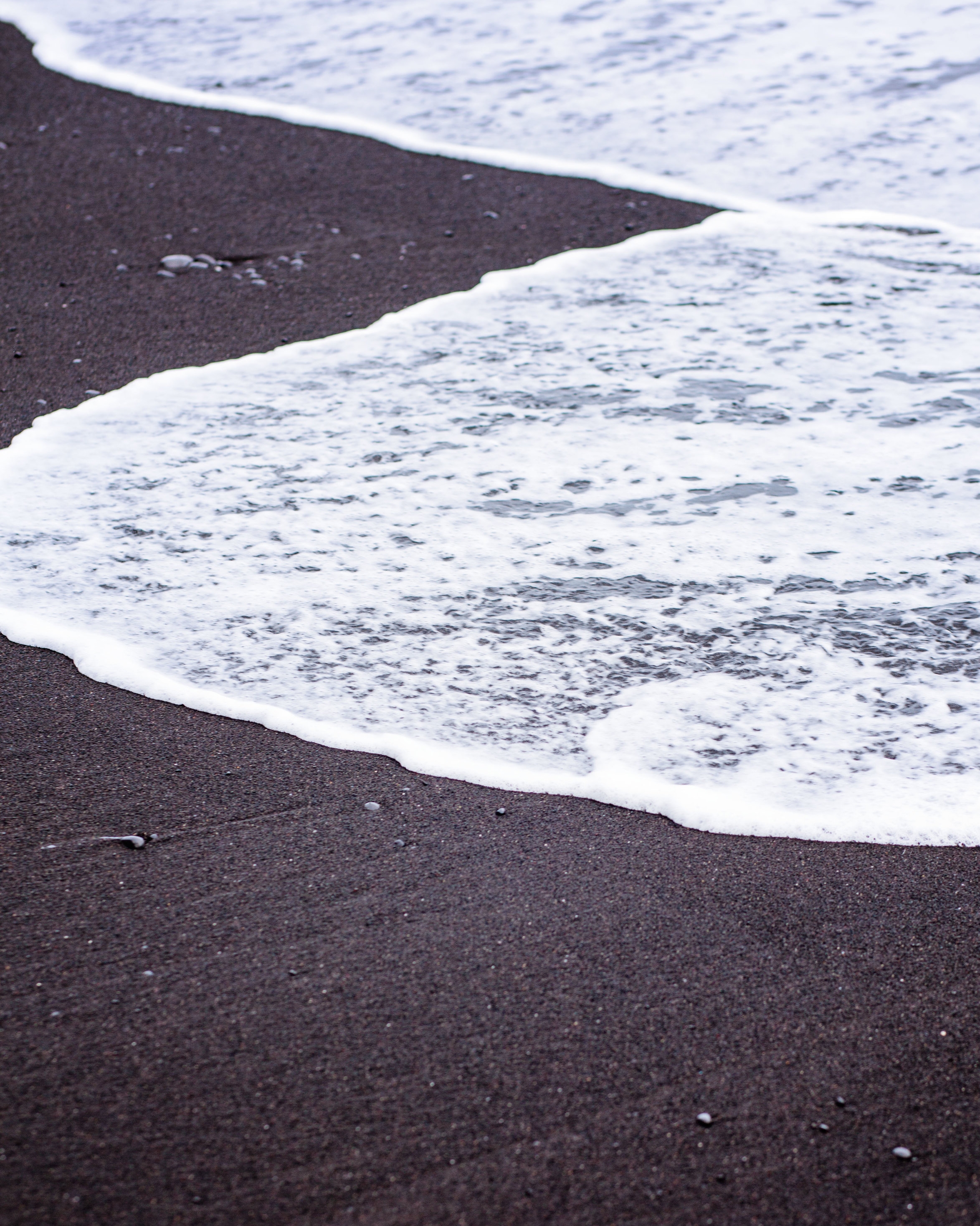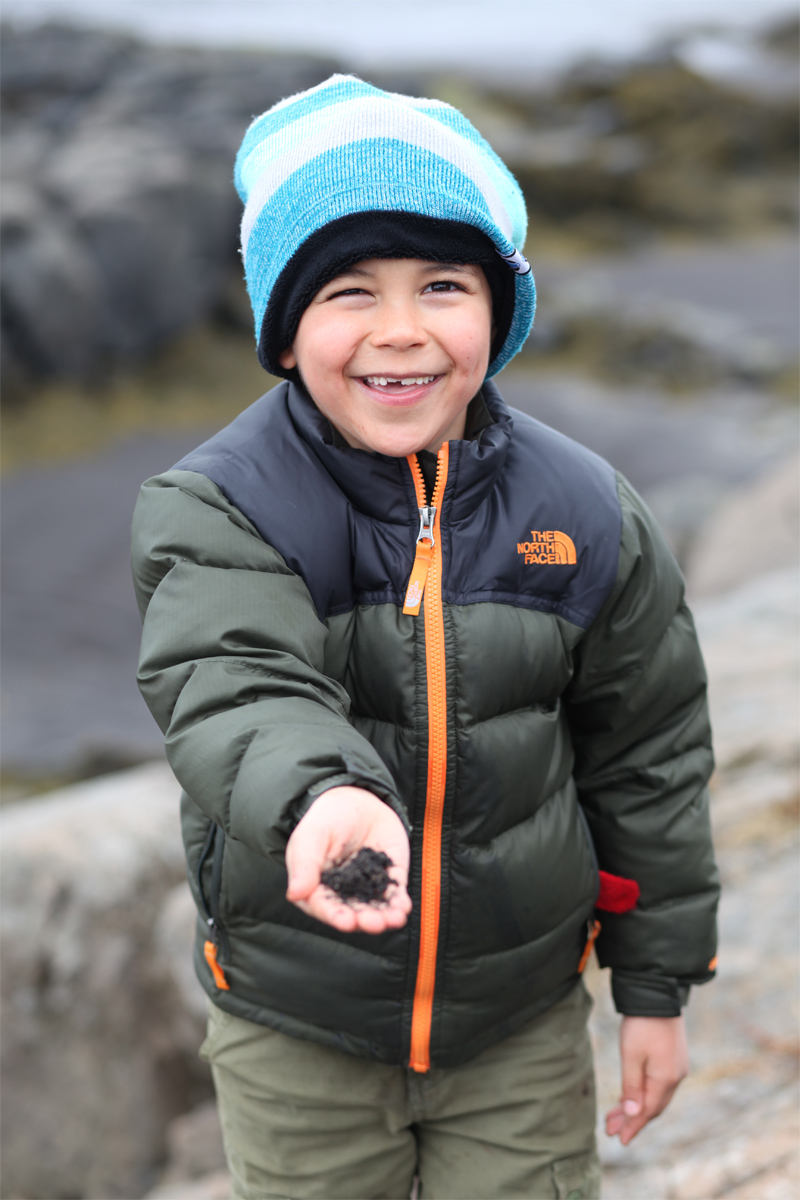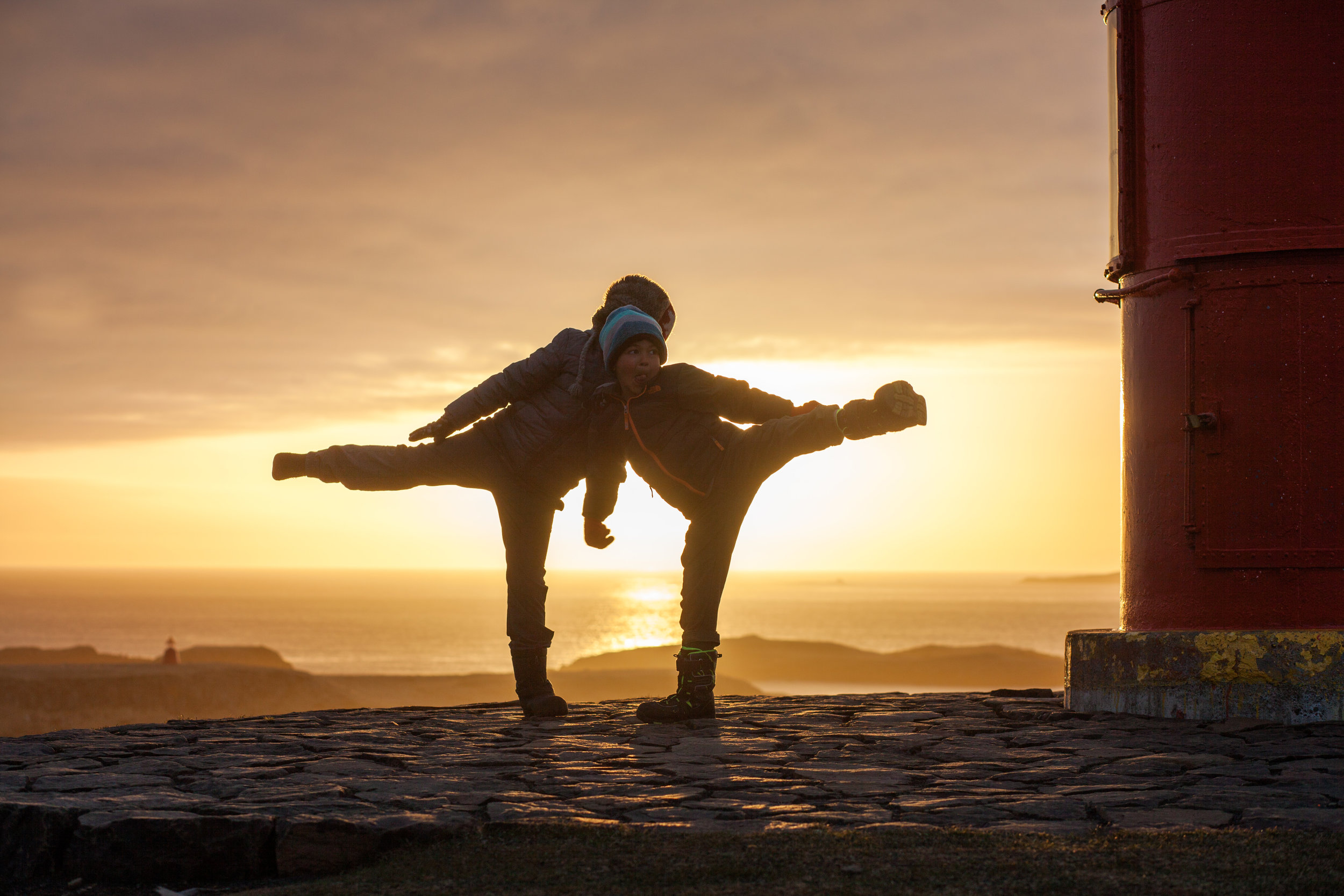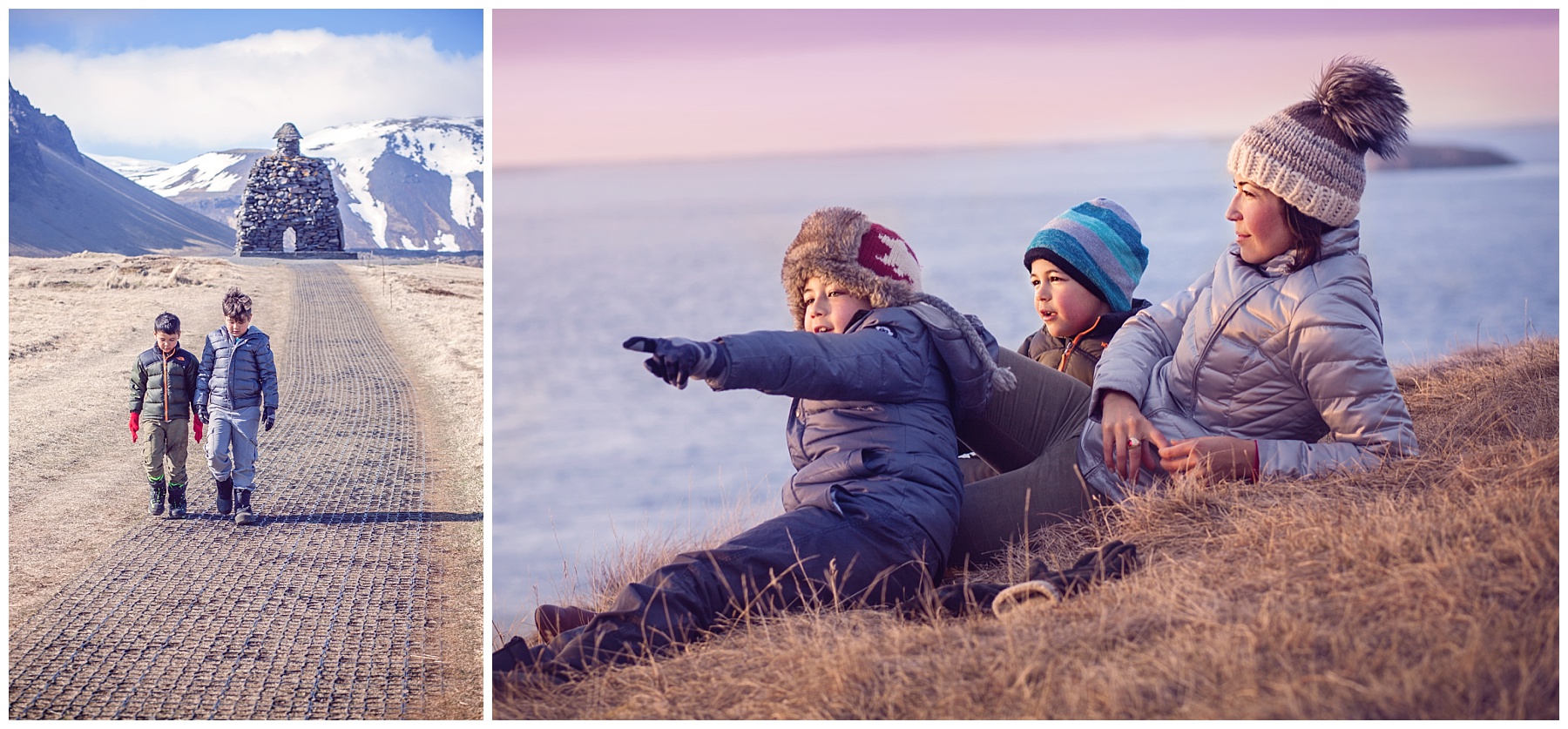Alien Lands

No, I’d never been to this country
before. No, I didn’t know where the roads
would lead me. No, I didn’t intend to
turn back.
- Mary Oliver
A Family Road Trip
It was rare for me to take the wheel on a long family road trip. This was doubly true when we were traveling abroad or in unfamiliar territory. Nevertheless, here we were. Brent was jet-lagged and we had a long way yet to reach our next destination. He needed a nap. I had been encouraged in the last few days to see that Iceland really only has one road to speak of, and since we were taking it around the country's perimeter, all I needed to do was get in the driver’s seat and…go.
Everyone was asleep – Brent in the passenger seat and our boys, Jin and Seu (9 and 6), in the back – and we were trying to make up a little lost time for having been unexpectedly snowed in in a tiny house near Lake Mývatn two days before. It was April, we reasoned, while planning our trip, but had forgotten how close the north of Iceland is to the Arctic Circle. While this means you can pull to the side of the road and let the kids out to run with wild reindeer, it also means that getting snowed in in April is an eventuality everyone should be prepared for. We were not, and losing one day did compress the timeline for the rest of our trip, which had been intricately planned to get us back to the airport with nary a minute to spare.
The sun was lowering in the sky, although the candy-pink hue of an Icelandic dusk can be enjoyed for hours. The sound of sleeping people around me and the hum of the highway beneath my tires did not so much disrupt the silence as give it texture. I zoned out, but occasionally a stray thought caught me unawares and threw me back into the jagged rhythm of the refrain that had haunted me for the last six weeks: “hurt for life, hurt for life, hurt for life.”
Somewhere mid-stifle, a sign rose up, reflecting in my headlights “Vík í Mýrdal” and an arrow. And for reasons I could not explain, I jerked the steering wheel to the left to follow the sign. Vik, whatever that was, was not on our itinerary, we were supposed to be making up lost time, and while I do consider myself to be an adventurous person, I also like to know where I’m going, especially driving at dusk in a foreign country.
Beckoned to the North
In the last year, however, I had learned by trial and error to follow the small voice in my head that always seemed to be saying, “go there,” “let’s try this,” and “why not?” I suppose I must have been hearing it all my life, but never consciously so. Once I had really “heard” it, though, I couldn’t un-hear it. It was always an invitation to something a little off the beaten path, and it had never let me down or led me astray. It was the same voice that told me to go to Iceland in the first place. Indeed, I had felt beckoned there after Dad's death the month before. He died and a deep yearning came over me, seemingly out of nowhere, to gather my family and flee to the cool austerity of the North. “Why North?” I asked myself. “To distill and to shed,” said my quiet inner voice. “You come here to rest.” Although I had heretofore never had anything more than an admiring curiosity about Iceland, that voice let me know there was not a minute to lose. I felt its urgency and because grief weakens your defenses, I complied without question. Our trip, from conception to final Airbnb booking and flight purchase took about a week to materialize out of thin air.
Vík í Mýrdal, as it turned out, was a sleepy little seaside town on the southeast coast of Iceland, nestled at the bottom of the mountain Reynisfjell, an igneous rock formation that rears 340 meters into the air. The town is perhaps most famous for its black sand beach, Reynisfjara, and the hexagonal basalt columns that rise sheer from the shore, and then ripple and undulate down the base of the Reynisfjell like the scales of a dragon that has just settled in for a nap and turned to stone. Icelanders say that the columns and sea stacks are the remains of trolls who dragged their ship masts ashore and got caught out in the rising sun.
Rated in 1991 one of the top ten most beautiful non-tropical beaches in the world, and long an attraction to geology geeks, it was a serendipitous discovery for us and one of the highlights of our trip. I had never seen anything like it. I marveled at the sand, which is truly black, and the stark contrast it displayed against the white surf. Each surging crush of wave receded gently, dragging an undulating and delicate train of sea foam behind it.
Seabirds nestled in the grass-tufted nooks of the basalt mountain behind us, and we shouted with glee when the puffins, so much smaller and cuter than we had expected, started to bumble in for their crash landings above us. Success!! We had tried for nearly a week to see the puffins for our son Jin, who had stubbornly decided to hang the entire success of the trip on the presence or absence of a good puffin sighting. We had built several stops into our itinerary to make it possible but had been thwarted at every turn. Locations that were touted in the guide books as reliable puffin hang-outs were devoid of puffins – at least at this time of year. Another one we didn’t even get to because it required driving through a mountain pass that took us from cerulean skies and balmy breezes at the base, up a harrowing switchback ledge of a road, without guardrails, and into the heart of a menacing mountain storm.
Puffins were supposed to be just ahead, if we could just get there. Jin’s mounting disappointment was a palpable miasma emanating from the back seat that pressed us forward, even as my inner voice countered with ever greater urgency, “Don’t go any further. Stop. STOP. Turn around.” By the time I was listening, there was no turning around. We were forced to drive backwards down the ledge with almost zero visibility until we found a slight widening at a bend that allowed for a tight 3-point turn. Brent’s knuckles were white and there was no talking. The warm and sunny valley, and dashed dreams, awaited below.
In the wake of that near disaster, Brent and I laughed nervously about the article we had read in a local newspaper a few days prior. Called “How Not to Die in Iceland” it was a jocular and irreverent guide for tourists, outlining many of the most frequently encountered dangers in Iceland. The changeable weather and a general lack of barriers at sheer drop-offs were two of them. The article’s final admonishment? Don’t be stupid.
And so we had largely given up on the puffins (we weren’t stupid!); they didn’t seem meant to be. But now here they were and Jin had a beatific look on his face that made me chuckle. Surely this was the face of a boy who had achieved some kind of meaningful enlightenment, not just seen a bunch of gangly little goofballs crash land into the cliff above his head. Meanwhile Seu, who, at first mention of a trip to Iceland, was most taken by the idea of black sand, had found his own Valhalla.
Our first day in the country, we did find a patch of the storied sand at a harbor, and he had grabbed a small fistful and stuffed it in his pocket, where he fingered the grains for the duration of our trip. Here, though, were millions – billions – of fistfuls, as far as the eye could see. He ran pell-mell at the waves, sounding his “barbaric yawp,” before the waves chased him back up the beach, nipping at his heels as his legs bicycled almost out of control to get him out of the way. After several such rounds of chase, and in his exhausted and ebullient haste, he fell face first into the sand, with crashing waves roaring up behind him. "Well," I thought, "here comes our magical detour to an early end; I wonder what clothes we can most easily fish out of the trunk and how long it will take to dry a down puffer coat in this weather?" But lo, as he went down, he instinctively went into an impressive commando roll and rolled once, twice, three times up the beach, never more than a splash out of sea’s reach. He rolled with such force that it seemed to propel his body back upright as he landed on his feet and bounced and jogged the rest of the way clear, and with a grin that cracked my heart open wide. We all saw it and it did require a bit of shouting. Such agility! Such instinct! Such luck! I hadn’t felt thrilled or joyful about anything in months but even I gave an involuntary whoop at the sight.
“Every loss feels manageable when you go somewhere that makes you feel like you are on a quest.”
Walking back to the car, I lagged behind Brent and the boys, wondering how I could have missed this wondrous place when planning our itinerary. I felt a quickening in me. A leavening of my spirit and my grief. A nascent healing was undeniable. How rare that I should have been driving as we passed it, and rarer still to have then followed a whim to go off the planned route and find this precious place - full of dragon scales and troll masts, puffins and black sand. I looked down, shaking my head in a grateful smile and saw at my feet that somebody before us had scoured the black beach and found a collection of white stones. They were arranged into large letters that stopped me in my tracks: “I love u,” with the word love depicted in a heart shape. A message made for someone else, yes, but surely, I felt – surely – left for me.
“Thank you for leading us here, Dad,” I said out loud. “I love you too.”
I have had two years to reflect on this remarkable experience. They have been two tough years, but the seeds of my healing and renewal, I realize now more than ever, were planted in the black sands of Iceland. Here is what Iceland did for me. As alien a land as you can find on this earth, it provided an external landscape that reflected my internal one – wild and unknown. A world without Bob Chan was no place I had ever been, no place I cared to be, and the broken shards of it snagged painfully and pulled everywhere in my ordinary reality. I bumped into its edges and stumbled on its broken floor with predictable unpredictability. The view from where I stood yawned before me, gray and colorless. I breathed in the serrated edge of loss and felt myself at the base of Mount Everest looking up; a Sisyphean journey. There was no end to it. This was not a load that could ever be put down or tucked away. No one else could carry it for me. I was, simply put, “hurt for life.”
But then here in Iceland the land and sky are so vast, so wide, so deep, and so magic, that they can receive and contain the whole of a broken heart and make it no more frightening or alien than the landscape itself. One’s grief becomes part and parcel of the beauty before you. No longer a disruptor – an intruder, a mangler of hearts – but a partner and co-creator of a beautiful moment.
Here is another discovery: every loss feels manageable when you go somewhere that makes you feel like you are on a quest. For a short time, your loss becomes part of your “personal legend” and the compelling seed to a story that is only now beginning to unfold. And you cannot help but look ahead in slightly breathless anticipation of… well, whatever comes next. Iceland reintroduced a sense of magic, enchantment, and expectancy in what had become an arid and static life. Iceland dumped Story in my lap and asked me to remember its power.
This post is dedicated to the storyteller inside each one of us. What will your story be? Remember that the story that you tell becomes the life that you live. I intend to live magically. And you?
Epic journeys and peaceful sunsets in Iceland. Here is a place where you can learn first-hand how beauty and loss are all rolled up into one, each enhancing the effect of the other, and knowing this, would you have it any other way? Be honest now. Would you?
Like, Comment, Share!
Although the buttons below work, Squarespace is currently struggling with a bug that erases the tracking at random. Please don’t let low or no numbers shown deter you. Likes and shares still help boost my visibility, even if the numbers don’t stick around to show it. Thank you!
